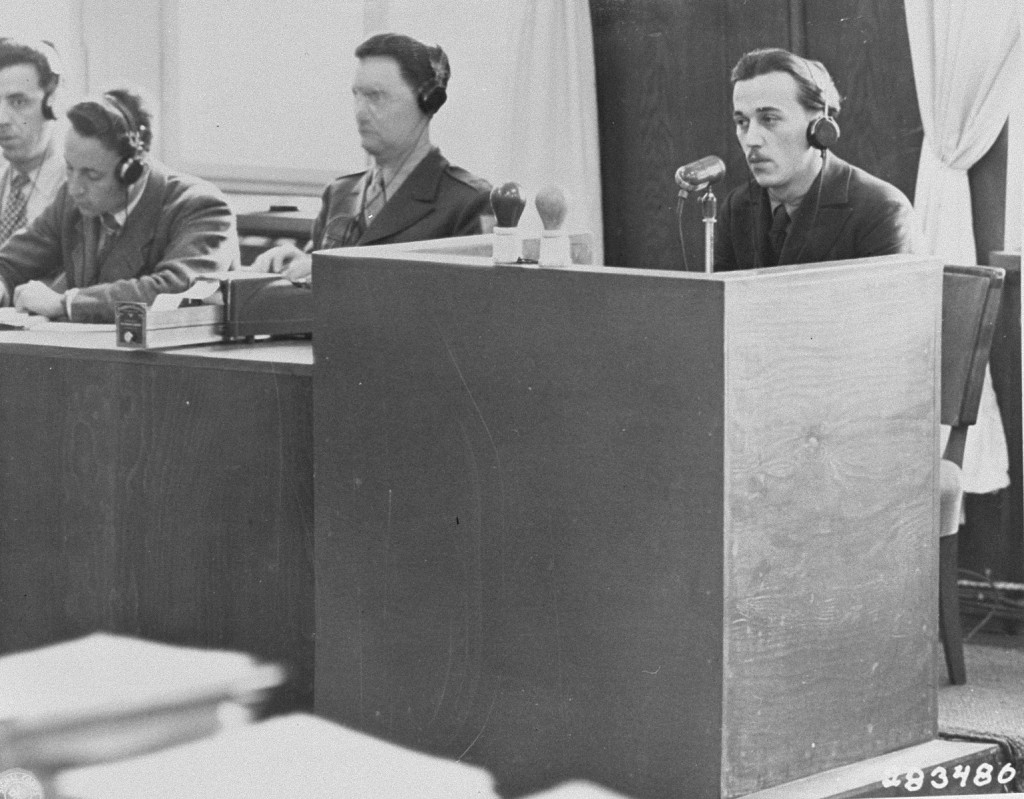
Subsequent Nuremberg Proceedings, Case #4: The Pohl Case
After World War II ended, the Allies established courts in each of their occupied zones in Germany to prosecute German officials for their role in the commission of war crimes, crimes against peace, and crimes against humanity. American military tribunals in Nuremberg, Germany, presided over 12 major proceedings against leading German industrialists, military figures, SS perpetrators, and others. Included among these Subsequent Nuremberg Trials was the Pohl Case.
United States v. Pohl, et al.
In January 1947, Military Tribunal II, which had been created by the US Military Government for Germany on December 14, 1946, took on the trial of Oswald Pohl and the WVHA, the fourth Subsequent Nuremberg Proceeding. Eighteen defendants, all members of the WVHA (Wirtschaft und Verwaltungshauptamt, the Economic and Administrative Main Office) were indicted on January 13, 1947, and arraigned on March 10.
The indictment contained four counts:
- participation in a common design or conspiracy to commit war crimes and crimes against humanity
- war crimes against civilians of German occupied territories and POWs in concentration camps (which the WVHA took control of in the spring of 1942)
- crimes against humanity against German civilians and nationals of other countries
- membership in the SS, recently declared a criminal organization by the International Military Tribunal
All the defendants were indicted under the first three counts, and all but one under the fourth count. The trial lasted from April 8 until September 22 and the Tribunal delivered its judgment and sentences on November 3. The first count of the indictment (conspiracy) was disregarded and judgments were delivered only on the last three counts. Three of the defendants were acquitted, but the rest were found guilty: two under only the second and third counts and thirteen under the second, third, and fourth counts.
The Tribunal sentenced four of the guilty defendants to death, three to life in prison, and eight to prison terms of 10, 20, or 25 years. Seven months later, however, the Military Governor, General Lucius D. Clay, reconvened Military Tribunal II, at the request of the judges, so the defendants could file additional briefs. After hearing more evidence presented on behalf of the defendants, the Tribunal returned its supplemental judgment on August 11, 1948, reaffirming its findings for all the defendants as well as the sentences for all but four. One of the death sentences was reduced to life imprisonment, one life sentence to 20 years in prison, one 25 year term to 20 years, and one 20 year term to 15 years. The Military Governor confirmed the revised sentences on April 30 and May 11, 1949.
The proceeding's chief defendant, head of the Economic and Administrative Main Office, Oswald Pohl, was executed on June 8, 1951.
Critical Thinking Questions
- Beyond the verdicts, what impact can trials have?
- How were various professions involved in implementing Nazi policies and ideology? What lessons can be considered for contemporary professionals?
- How have some professional codes of conduct changed following the Holocaust?
- Is it ever too late for accountability?

